The Case For Keeping Your LMS Up To Date
Another Day, Another Update:
You’ve invested a lot of time and money setting up your Learning Management System (LMS) and filling it with content. Everything seems to be running smoothly—management is satisfied, learners are using the system, and things are going well. It might feel like the best approach is to leave things as they are. But why should you think about upgrading your LMS or planning regular updates? Let’s look at some pros and cons.
Common Concerns:
What common objections are there to maintaining regular updates?
If you’re in an IT support role, you will be well acquainted with the likelihood of a new version lacking stability. Received wisdom for updates for even the most widespread commercial systems is to wait a few months before installing an update while the providers work out the bugs. This concern is valid, as unexpected problems could disrupt a well-functioning system.
Another disadvantage can be the cost of upgrading. Does it require more powerful hardware? What are the subscription or maintenance fees? Can they offset your ROI?
A less obvious but significant concern is resistance to change. Members of an organisation may feel uneasy or hesitant about updates if they involve learning new processes or adapting to different workflows. This reluctance, known as Change Aversion, can slow the adoption of updates. Closely related is Change Fatigue, where frequent updates leave employees feeling drained, overwhelmed, and disengaged.
Things to Think About:

These considerations are valid and should not be ignored. However, there are strong reasons for setting up a regular schedule for updates.
A top priority for educators in any context is presenting learning that ‘sticks’. There is little to no point in handing out content that learners can’t or won’t engage with and retain. This will certainly mean updating our approach to teaching and reframing what we want learning to achieve. This is partly due to major shifts in how education is viewed today.
A growing group of modern educational thinkers are now questioning whether traditional systems, designed during the Industrial Revolution, are still relevant. These systems were originally intended to produce obedient factory workers, which does not match the skills needed in today’s world. In his well-known TED Talk “Do Schools Kill Creativity?” Sir Ken Robinson, a leading voice for education reform, argues for more personalised, flexible, and holistic education models. He calls for teaching approaches that encourage creativity, critical thinking, and teamwork.
The impact of this reform means that businesses and higher learning institutions need to pay special attention to the advancements in adult learning theory. The importance of ensuring that content delivery matches how adults best absorb information cannot be overemphasized.
This includes strategies like microlearning, gamification and adaptive learning. As content creators ourselves, we do our best to stay informed of these developments and we talk about them in some of our other blogs which we encourage you to look at.
Why Updating Your LMS Matters:
“How does this relate to keeping my LMS current?”, we hear you cry! Well, all these developments in learning theory mean that any LMS development team worth its salt is going to be working on features that help you to implement the most effective strategies.
To help you keep on top of innovations in learning trends, an LMS needs to be able to support hybrid working and learning environments. It must have tools that help you quickly and easily introduce gamification. It must actively support the best learning techniques, making microlearning and adaptive learning accessible to content creators and learners.
Staying compatible and up to date with adaptations of new tools like virtual classrooms, AI-powered analytics, and content created in formats like SCORM or xAPI is essential. Before Covid, we never imagined how useful and even necessary video conferencing tools like Zoom or Teams would become. Now it’s hard to imagine our working and educational world without them. At the time, however, LMSs had to adapt quickly to integrate third-party tools or upgrade older, less flexible systems.
Improvements to the user experience are also critical. Easier navigation, better design and faster performance reduce the learning curve or both learners and administrators, encouraging higher engagement and better results.
LMS updates often introduce features that make scaling seamless, allowing you to accommodate larger user bases, more content, and enhanced reporting tools without disrupting existing workflows.
Is it really worth it?
Will you really see return on investment? Deloitte, a global consulting firm, successfully used gamified learning within their LMS to boost employee engagement and skill acquisition. Deloitte implemented a gamified leadership training programme that included features like badges, leaderboards, and levels to encourage employees to actively participate in training modules.
The result? Employee engagement increased by 47%, and participants completed the training 50% faster than with traditional methods. The gamified system motivated learners to return to the platform more frequently and apply new skills more effectively in their roles. It’s a great example of how modern LMS features like gamification can directly impact organisational performance and skill development.
How Moodle Does It:
It’s no secret that we are Moodle enthusiasts here at the Learning Studio and we’re very satisfied with its ability to tick all the boxes mentioned above. Moodle 4.5 demonstrates a strong focus on modern learning trends by integrating gamification features, an intuitive user interface, seamless scaling, and support for adult learning techniques. The platform enables administrators to incorporate gamified elements such as badges, leaderboards, and interactive activities to enhance learner motivation and engagement. Its latest user interface innovation simplifies navigation, making it easier for users to access courses and resources efficiently. Additionally, Moodle 4.5 is designed to scale effortlessly, accommodating both small organisations and large institutions. By supporting microlearning, adaptive learning, and other adult learning strategies, Moodle ensures that educational content aligns with how adults best acquire and retain knowledge.
Conclusion
Will having a regular schedule for updating your Moodle platform pay off? Is it really worth it?
We are convinced that Moodle will offer a near painless update integration. A cautious support approach that waits for a reasonable period before rolling out updates will benefit the IT department. The simple but effective user interface means that there is not such a heavy learning curve for new features, which in turn means that the impact of Change Aversion is mitigated.
The fact that Moodle is already opensource and does not involve licensing costs, significantly improves your return on investment (ROI).
All in all, we recommend taking a good look at implementing an update programme. We’re happy to advise and assist you in deciding how to go about it!

Kerushan Naidoo
Head of Moodle Development
